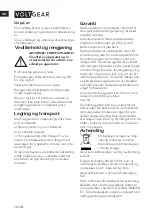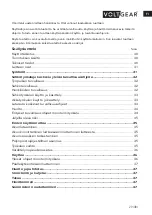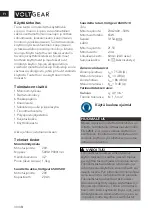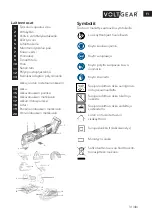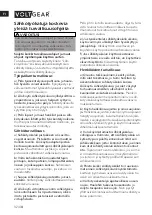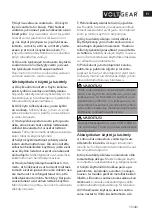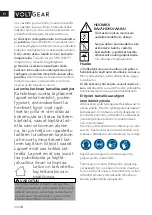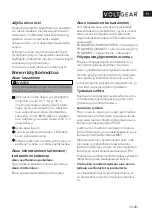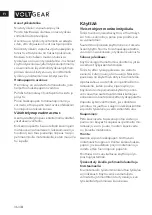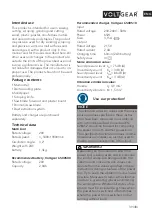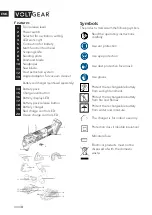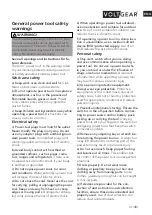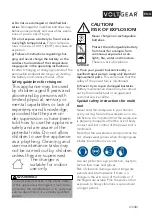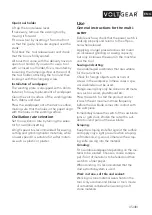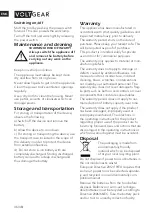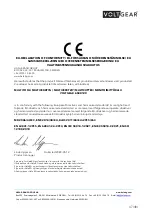
42 (48)
ENG
h)
Do not let familiarity gained from frequ-
ent use of tools allow you to become com-
placent and ignore tool safety principles.
A careless action can cause severe injury
within a fraction of a second.
Power tool use and care
a) Do not force the power tool. Use the
correct power tool for your application.
The
correct power tool will do the job better and
safer at the rate for which it was designed.
b) Do not use the power tool if the switch
does not turn it on and off.
Any power tool
that cannot be controlled with the switch is
dangerous and must be repaired.
c) Disconnect the plug from the power
source and/or remove the battery pack,
if detachable, from the power tool before
making any adjustments, changing acces-
sories, or storing power tools.
Such pre-
ventive safety measures reduce the risk of
starting the power tool accidentally.
d) Store idle power tools out of the reach
of children and do not allow persons unfa-
miliar with the power tool or these instruc-
tions to operate the power tool.
Power
tools are dangerous in the hands of untrai-
ned users.
e) Maintain power tools and accessori-
es. Check for misalignment or binding
of moving parts, breakage of parts and
any other condition that may affect the
power tool’s operation. If damaged, have
the power tool repaired before use.
Many
accidents are caused by poorly maintained
power tools.
f) Keep cutting tools sharp and clean.
Pro-
perly maintained cutting tools with sharp
cutting edges are less likely to bind and are
easier to control.
g) Use the power tool, accessories and tool
bits, etc., in accordance with these instruc-
tions, taking into account the working con-
ditions and the work to be performed.
Use
of the power tool for operations different
from those intended could result in a hazar-
dous situation.
h) Keep handles and grasping surfaces dry,
clean and free from oil and grease.
Slippery
handles and grasping surfaces do not allow
for safe handling and control of the tool in
unexpected situations.
Hold the appliance by the insulated grip-
ping surfaces when carrying out work
during which the screws or the accessory
tool may hit concealed power lines. If the
accessory tool or the screws come into con-
tact with a live wire, this may make exposed
metal parts of the power tool live and result
in an electric shock.
WARNING!
Do not use any accessories which have not
been recommended by VOLTGEAR. This
can lead to electric shock and fire.
WARNING!
Battery tool use and care
a) Charge a rechargeable battery using only
the charger recommended by the manu-
facturer. Chargers are often designed for a
particular type of rechargeable battery unit.
There is the danger of fire if other types of
rechargeable battery units are used.
b) Only the recommended rechargeable
battery units are to be used with an electri-
cal power tool.
The use of other rechargea-
ble battery units may lead to the danger of
injury or fire.
c) When they are not being used, store
rechargeable battery units away from pa-
perclips, coins, keys, nails, screws or other
small metal objects that could cause the
contacts to be bridged.
Short-circuiting the
contacts of a rechargeable battery unit may
result in heat damage or fire.
d) Fluids may leak out of rechargeable bat-
tery units if they are misused. If this hap-
pens, avoid contact with the fluid.
If contact
occurs, flush the affected area with water.
Seek additional medical help if any of the
fluid gets into your eyes. Escaping battery
fluid may cause skin irritation or burns.
Summary of Contents for 7330027147901
Page 48: ......

